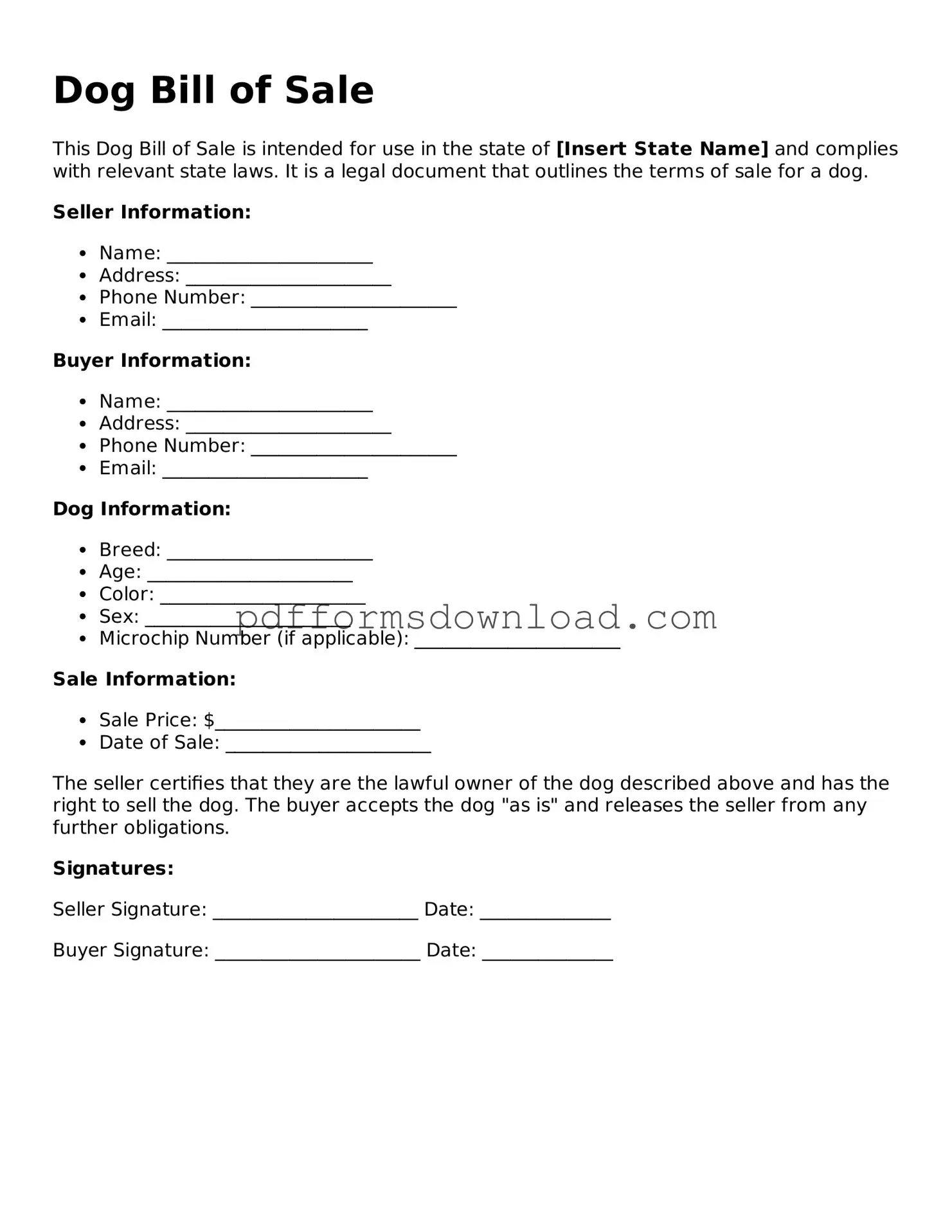What is a Dog Bill of Sale form?
A Dog Bill of Sale form is a legal document that records the transfer of ownership of a dog from one party to another. This form serves as proof that the seller has transferred ownership and that the buyer has accepted it. It typically includes details about the dog, such as breed, age, and any identifying information, as well as the names and signatures of both the seller and the buyer.
Why is a Dog Bill of Sale important?
This document is important for several reasons. First, it protects both the buyer and seller by providing a clear record of the transaction. It helps prevent disputes over ownership and can serve as proof of purchase if any issues arise in the future. Additionally, some states may require a bill of sale for pet transactions to ensure compliance with local laws.
What information should be included in the Dog Bill of Sale?
The Dog Bill of Sale should include essential details such as the dog's breed, age, color, and any unique identification marks, like a microchip number. It should also contain the names and contact information of both the seller and buyer, the sale price, and the date of the transaction. Both parties should sign the document to validate the sale.
Is a Dog Bill of Sale required by law?
While not every state mandates a Dog Bill of Sale, it is highly recommended to have one for your records. Some states may have specific regulations regarding pet sales, so it's wise to check local laws. Even if not legally required, having this document can provide peace of mind and clarity for both parties involved.
Can I create my own Dog Bill of Sale?
Yes, you can create your own Dog Bill of Sale. There are many templates available online that you can customize to fit your needs. Ensure that the form includes all necessary information and that both parties sign it. Alternatively, you can consult with a legal professional to draft a more formal document if desired.
What if the dog has health issues?
If the dog has any known health issues, it is crucial to disclose this information in the Dog Bill of Sale. Transparency helps protect both parties and can prevent future disputes. The seller should provide any relevant medical records, and the buyer should acknowledge their understanding of the dog's health condition in the document.
How do I handle the payment in a Dog Bill of Sale?
Payment details should be clearly outlined in the Dog Bill of Sale. Specify the total sale price and the method of payment, whether it be cash, check, or another form. It's advisable to keep a record of the transaction, such as a receipt, to accompany the bill of sale for future reference.
